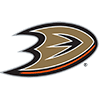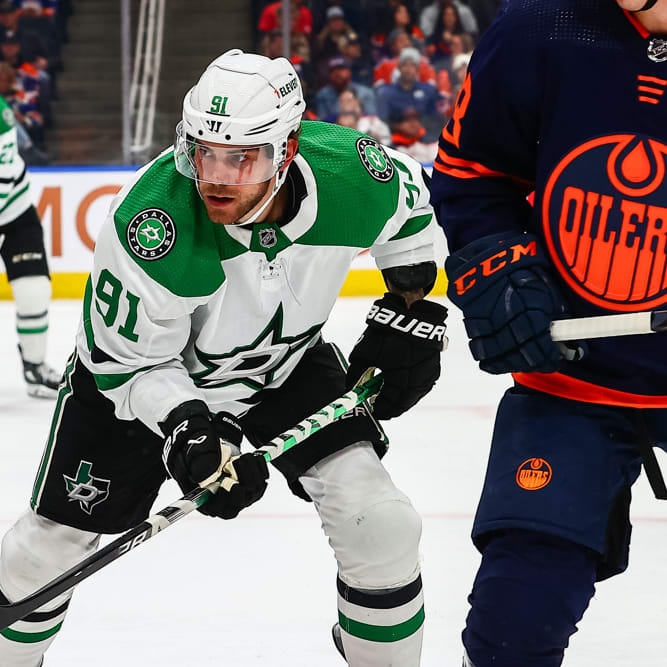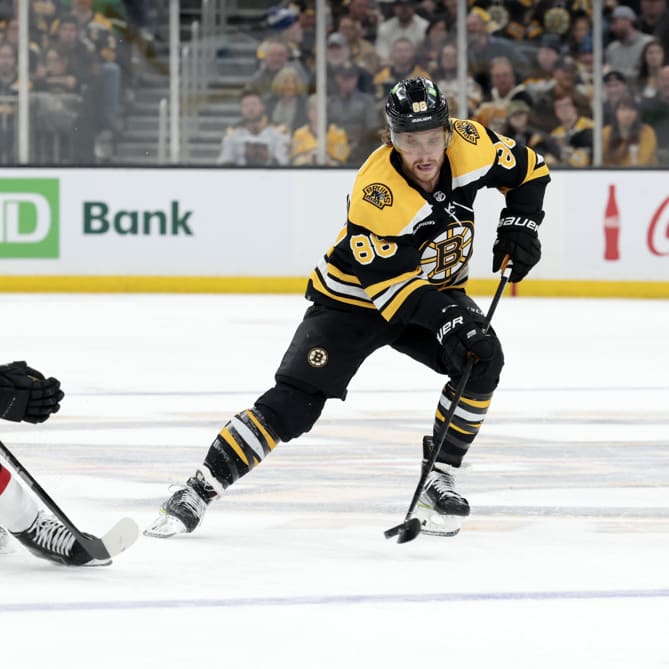This article is part of our Cap Compliance series.
While the current season remains on hiatus, there is no time like the present to start looking ahead to next year. Over the next several weeks, we'll take a look at the cap situation for all 31 NHL clubs, including restricted free agents, unrestricted free agents and even potential buyouts. Then, we'll play a little armchair General Manager by providing our recommendations for how we would approach the upcoming 2020-21 campaign if we were running the club.
In a recent Twitter poll, the  Anaheim Ducks came in third, so they're up next:
Anaheim Ducks came in third, so they're up next:
2020-21 Cap Situation
The Ducks currently have 12 forwards, five defensemen and one goaltender under contract for next season at a price tag of $69,054,999 and will also be on the hook for another $6.625 million for Corey Perry's buyout. Assuming a flat cap of $81.5 million, this leaves the club with $5,820,001 in salary cap space and five spots under the 23-man roster to fill.
Restricted Free Agents
Sonny Milano ($874,125) Jacob Larsson ($894,166)
AJ Scholz: A qualifying offer for Larsson would come in at $874,125 in base salary, yet he logged 60 games for the club this season, which should be enough to earn him a raise. One alternative for Anaheim would be to give him a one-way deal, which could lead to Larsson agreeing to a slightly lower cap hit. Christian Djoos just signed a one-year, $1 million contract and only played in 11 games this year (nine with the Ducks), so that figures to be Larsson's floor. I'd imagine a $1.25 million AAV for 2-3 years would get the job done. Milano's contract negotiation figures to be the most contentious of all the deals Anaheim needs to work out. In 2017-18, he racked up 22 points in 55 games for the Blue Jackets, however, he followed that up by playing in only eight outings the next year. In limited action since his move to the West Coast, the New York native has been productive with five points in nine appearances. He'll no doubt want more money than the team is willing to offer him, but it's possible he could be signed for the same contract as Larsson.
Kyle Riley: Larsson has yet to live up to his first-round billing, but he's developed into a steady bottom-four defender for the Ducks over the past two seasons, posting two goals, 16 points and a minus-13 rating while averaging 16:34 of ice time in 109 appearances. He's limited offensively, so he shouldn't be expecting a big payday, but I'd be comfortable with inking him to a two or three-year deal with an AAV around $1.5 million. Milano was playing well for Anaheim prior to the league going on hiatus, picking up two goals and three assists while averaging 15:29 of ice time in nine games, but he definitely won't demand a big raise having totaled just 47 points in 125 contests through his first five years in the league. I'd be looking to sign him to a two-year, $3 million "prove-it" deal.
Unrestricted Free Agents
Michael Del Zotto ($750,000) Matt Irwin ($675,000) Ryan Miller ($1.125 million) Patrick Eaves ($3.15 million)
AJ Scholz: While the Ducks have some cap space to work with, I don't believe they will re-sign any of these UFAs, though I'll make a passing case for Miller and Del Zotto nonetheless. Miller is the winningest US-born netminder in NHL history and likely won't command much in terms of a contract, his $1.125 million deal for another year is doable. Still, it's likely time to look ahead and bring Anthony Stolarz up from the minors to get a look as the No. 2 behind John Gibson. In the case of Del Zotto, the blueliner notched 15 points in 49 games this season while averaging 18:43 of ice time. Again, there are youngsters like Brendan Guhle, Joel Persson and the recently re-signed Jani Hakanpaa pushing for bigger roles which likely makes Del Zotto expendable.
Kyle Riley: I expect Eaves to retire due to his health concerns, so that situation should take care of itself. The Ducks are going through a full-on rebuild, which means they should really be focused on making an effort to figure out exactly what they have in guys like Guhle and Josh Mahura, who are both just 22 years old. Both blueliners have spent the majority of the season in the minors, but both should have significant roles with the big club next year. That means Irwin and Del Zotto ought to be putting on different sweaters in 2020-21. Miller will be 40 years old by the time next season gets underway, so it's quite possible that he'll decide to call it a career. Either way, I think Stolarz has the potential to be a capable backup, so re-signing Miller shouldn't even be in consideration for the Ducks.
Minor-League Free Agents *Who appeared in an NHL game in 2019-20
Kiefer Sherwood ($925,000) Troy Terry ($925,000) Chase De Leo ($750,000) Sam Carrick ($700,000) Brendan Guhle ($697,500)
AJ Scholz: Let's get the easy one out of the way first; Carrick won't be playing in the NHL much (if at all) for the Ducks, so if he is willing to take a relatively minimal deal, maybe a slight bump to $750,000, and play in the minors, then sure, re-sign him. Now we get into a handful of difficult decisions in terms of what to offer the three forwards; though Sherwood, Terry and De Leo are all restricted free agents, so they'll be back with the team either way. The 22-year-old Terry played in the most games this past season (47) but was a healthy scratch his last six contests before the lockout. I think a two-year, $975,000 AAV contract that retains his RFA rights at the end of the deal, with Sherwood at $950,000 and De Leo at $800,000, probably works across the board. The player most likely to top the $1 million paycheck mark is Guhle, who could become a mainstay in the lineup, especially if Del Zotto and Irwin are allowed to walk. The club could save some money by extending term, so I'd look for a three-year, $2.85 million deal headed the 22-year-old's direction.
Kyle Riley: Carrick is the type of veteran presence NHL organizations love to have suiting up for their AHL affiliates, so I'd definitely try to keep him around on another one-year deal. As AJ said, a one-year, two-way contract with an AAV of $750,000 sounds just about right for the 28-year-old forward. Sherwood went from playing 50 games for the Ducks in 2019-20 to just 10 this season, so I wouldn't offer him anything more than his qualifying offer. I think Terry has the potential to develop into a high-end, bottom-six forward that can contribute on the power play, so he's worth keeping around on a two or three-year deal with an AAV around (if not a little above) $1 million. De Leo has only appeared in two games for the Ducks over the past two seasons, and I doubt they'd be able to net in anything in return in a trade for his rights, so I'd actually just not extend him a qualifying offer and let him enter the open market. As I mentioned earlier, Del Zotto and Irwin should both be heading elsewhere in free agency this offseason, which would make locking Guhle down a must for Anaheim. The 22-year-old blueliner is still entirely unproven at the NHL level, so a two or three-year deal with an AAV around $1 million should do the trick.
Final Thoughts
AJ Scholz: The Corey Perry buyout stings especially bad if the cap doesn't increase in size next season, as this year is the highest hit for Anaheim over the course of the four-year buyout. It likely doesn't leave the team with a lot of room to pursue players in the free agent market. I would expect most of the Ducks' activity will be re-signing their own restricted free agents and then filling in the roster with up-and-coming youngsters like Terry, Sherwood, Persson and Guhle. One option to create more cap space would be to buyout the contract of David Backes. The Ducks wouldn't receive the full benefit of the cap savings, yet it would give them another $1.5 million to spend on the free agency market. I also wouldn't be shocked if the team tried to move a player like Sonny Milano in order to avoid him hitting the open market for nothing if they aren't planning to give him a qualifying offer.
Kyle Riley: Although his buyout is undoubtedly a back breaker, Anaheim wouldn't be in a position to contend next season even if they weren't eating $6.625 million in cap space for the luxury of having Perry play elsewhere, so in the long run I still think it will prove to have been the right move. His cap hit will be coming off the books after the 2022-23 campaign, which is right around when the Ducks should be ready to make a serious run at it. Anaheim's 2020-21 season ought to primarily be about looking towards the future by evaluating the organization's young talent and deciding which players will form the Ducks' core going forward, and the plan I've outlined above would put the team in a great position to do so.












